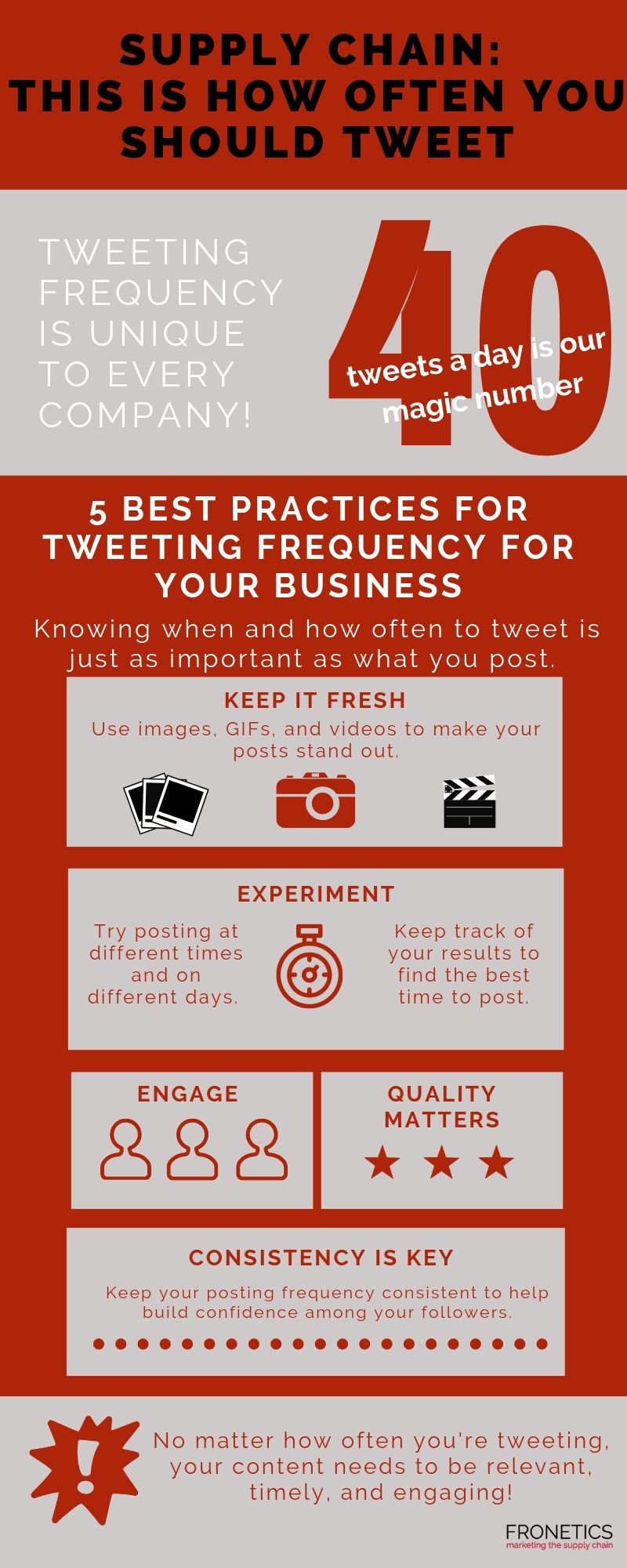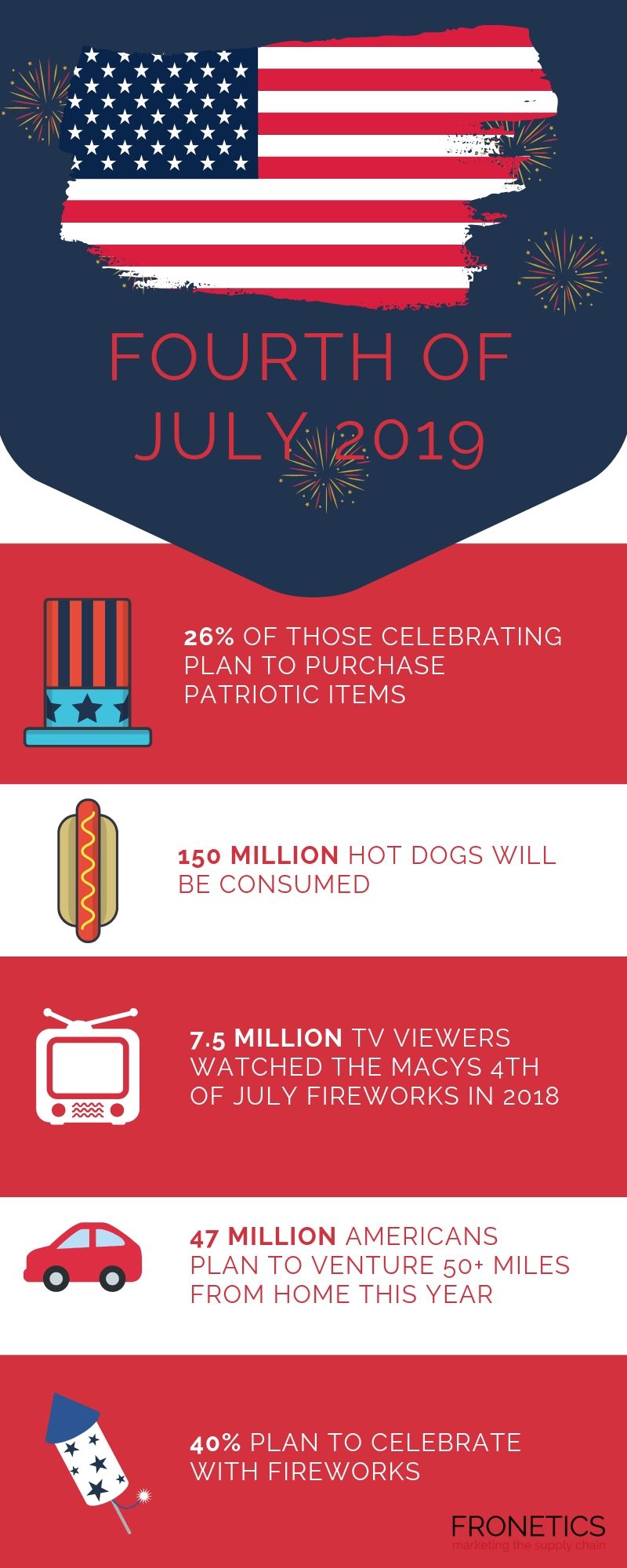
by Fronetics | Jul 17, 2019 | Blog, Content Marketing, Current Events, Logistics, Marketing, Supply Chain
Here are four ways the Amazon effect is shaking up supply chain trends – and why it’s a net positive for the industry.
Highlights:
- More companies will start to tap into the gig economy in the last mile, and Uber-style delivery companies will emerge.
- To meet growing customer demand, same-day delivery will become increasingly standard.
- Supply chain leaders will be increasingly evaluated according to customer experience.
Here’s the thing about adversity: it has a tendency to test our strength, and, more often than not, it brings out the best in us. There’s no doubt that the meteoric ascendency of Amazon has created plenty of adversity for the retail, transportation, and supply chain industries. But as the corporation continues to shake up supply chain trends, it’s actually giving the industry an opportunity to sharpen and refine its practices.
Amazon’s dominance has already influenced supply chain trends in big ways. Industry-wide, companies have been compelled to reflect how they do business. In many cases, it’s been a painful process: businesses have had to reinvent, in everything from what and how processes are implemented to the choice of new technologies to purchase. But despite the difficulty, the reinvention process has the potential to pay big dividends in the long term.
Experts are predicting that there are four major ways in which Amazon will continue disrupting supply chain trends going forward.
4 ways Amazon will keep disrupting supply chain trends
1) Uber-style delivery companies
If you think e-commerce sales are high, you haven’t seen anything yet. Recent data from Statista predicts that e-commerce sales will grow as much as 25% by 2022, meaning that retail delivery will undergo analogous growth. As postal service prices rise, FedEx and UPS will likely need to make more deliveries themselves. Meanwhile, Amazon’s 3PL business is booming, putting pressure on the competition.
While these retail delivery services have not yet tapped into the gig economy, largely thanks to opposition from labor unions, it’s only a matter of time according to Convey CEO Rob Taylor. Taylor predicts that a deal will be “brokered between unions and 1099 labor, following in the footsteps of Uber and the taxi and public transportation industries’ unionization efforts.”
2) Same-day delivery
Same-day delivery, once a novelty, is increasingly a subject of consumer demand. PwC’s Global Consumer Insights Survey 2019 found that 40% of online shoppers are willing to pay extra for same-day delivery. To meet the demand retailers are investing in on-demand warehousing and other solutions for increasing localized inventory.
In addition, there’s the rise of drone delivery. Back in 2017, McKinsey estimated that the value of drone activity would reach $1 billion. More recent estimates, including one from ResearchandMarkets, set the value at $11.2 billion by 2022. It’s not long before same-day delivery will be necessary for businesses to compete.
3) Customer satisfaction metrics
As supply chain trends go, the type of metrics used to evaluate personnel may not seem particularly revolutionary. In fact, this type of shift is an indicator of sweeping cultural change. Writing for Fortune, Elementum CEO Nader Mikhail predicts that “tomorrow’s CEOs will come from an unlikely place: the supply chain.”
Customer expectations have been redefined, thanks to the Amazon effect, and businesses need leaders who are skilled at transforming overarching goals into many smaller variables. Where better to find such skills than among the ranks of supply chain leaders?
As a result, in addition to more traditional supply chain key performance indicators (KPIs), Taylor predicts that “net promoter score (NPS) and customer satisfaction (CSAT), which are leading indicators of customer happiness and loyalty, will play a greater role in the supply chain scorecard.” Essentially, supply chain and marketing goals will increasingly intersect.
4) Artificial Intelligence
Artificial Intelligence (AI) is among the most widely discussed supply chain trends in recent years. AI is helping supply chain leaders collate and analyze operational data, and “automating the ability to predict customer demand, forecast product availability, optimize routes for delivery, and better target and personalize communication with customers,” according to Taylor.
Amazon has invested heavily in AI technologies including order optimization, blockchain, warehouse robotics, and the Internet of Things. To keep up, Taylor predicts that “a new generation of supply chain leaders will likely require skills in AI that empower them to translate this highly technical information into business decisions and profitability.”
Navigating the Amazon effect on supply chain trends
When it comes to managing Amazon’s disruptive effects on supply chain trends, the industry will do best to look on them as opportunities. Amazon’s success is, according to Taylor, “pushing brands to modernize and align their teams around the central goal of improving customer experience.” The bottom line is that thanks to Amazon, supply chain companies need to be primarily focused on the customer in order to compete.
Related posts:


by Fronetics | Jul 16, 2019 | Blog, Content Marketing, Current Events, Logistics, Marketing, Supply Chain
With the ubiquity of mobile phones and the ease of SMS messaging, text-based marketing holds plenty of potential for supply chain marketers.
Highlights:
- Many of marketers’ hesitations about text-based marketing are based on misconceptions.
- Research shows that text outperforms email in open and click-through rates.
- Currently, there’s a competition vacuum as business have been slow to adopt this channel.
Text-based marketing presents something of a quandary for supply chain businesses. Many marketers are understandably reluctant to make use of this communication channel, fearing the possibility that it will be perceived as intrusive and cause leads to turn away.
But, in fact, many of the fears about text-based marketing are actually misperceptions. As Ardath Albee, CEO of Marketing Interactions, Inc. puts it, “When done strategically, respectfully, and in a contextually relevant way, the profitable benefits of SMS marketing easily supersede the most common pitfalls of this unique channel.”
Here are some common misconceptions about text-based marketing.
4 popular misconceptions about text-based marketing
1) SMS marketing means sending out unsolicited text messages.
Most of us have gotten them: the text from a random number — perhaps advertising health insurance, warning of a compromised bank account, or congratulating you on winning a gift card. This kind of spam is what many marketers think of when they hear “text-based marketing.” No legitimate business wants to be associated with this sort of tactic.
You may be surprised to learn that legitimate text-based marketing doesn’t work this way at all. According to Justin Mastrangelo, founder of JA.TXT text message marketing software platform, “Not only is sending unauthorized text messages terribly ineffective, it’s illegal and could lead to lawsuits and penalties.” Instead, your contacts will need to opt in to receive text messages, so they will be expecting them.
2) I need my own shortcode.
Many small and mid-sized businesses shy away from text-based marketing based on the hassle and expense of obtaining their own shortcode. While it’s true that for large brands, obtaining their own shortcodes can be worthwhile, most moderately sized businesses don’t actually need a shortcode of their own.
Most SMS marketing providers furnish their clients with their shared shortcodes, meaning that your business would likely not need to spend the time or money to obtain and set up a shortcode.
3) Text-based marketing doesn’t engage leads.
When many of us think of text-based marketing, we imagine it to be a one-way street, with businesses seeking to grow a massive list of numbers and blasting them with texts. Because we all have experience with SMS spam, we naturally assume that texts from businesses will be ignored.
But the reality is that since prospects need to opt in to receive texts from your business, they are quite likely to engage with them, as texts are immediate and easy to react to. Businesses “often overlook the two-way capabilities of SMS,” says Mastrangelo. “Many organizations have captured email addresses, ZIP codes, survey responses, product numbers, and more through text message.”
4) My audience doesn’t want texts from my business.
Because text-based marketing inherently feels more intimate and immediate than other forms of digital marketing, marketers are often leery of taking the leap, believing that prospects will just be annoyed to receive texts.
But, as it turns out, text-based marketing is not unlike other forms of digital marketing: your audience absolutely wants to receive it, on one condition – you need to be providing value.
7 reasons to consider text-based marketing
Now that we’ve cleared up some of the most widespread misperceptions about text-based marketing, here are six reasons why we think you should consider it.
1) Your audience prefers it.
You’ll probably be surprised to learn that recent research shows that 85% of mobile device users prefer a text from businesses over phone calls or emails.
2) Texting is what people do most on their phones.
While email and social media marketing generally capture most of the buzz, users actually spend more time texting than doing anything else on their mobile devices.
3) Get ahead of the competition.
Since B2B businesses have generally been hesitant to integrate text-based marketing, there’s currently a competition vacuum.
4) It works throughout the buyer’s journey.
As with email marketing, text-based marketing can be effective at every stage of the buyer’s journey, and the highly personal nature of the medium fosters better relationships and customer experience.
5) SMS marketing is interactive.
Text-based marketing is actually an excellent way to promote engagement, since users opt in to initiate it, and responding to and interacting with texts is extremely easy.
6) It’s an ideal precursor to chatbots.
We’ve written a lot about chatbots, and how they can be a great tool for the supply chain. Text-based marketing is the perfect testing ground to see how your content will fare with chatbot marketing.
7) Text-based marketing outperforms email.
You read that right. By two of the most important metrics, open and click-through rates, text-based marketing actually outperforms email. While email has an average open rate of 22% and a click-through rate of 6%, texts have a whopping 97% open rate and a 36% click-through rate.
The bottom line: give text-based marketing a try
Digital marketing is a many-headed hydra, with new channels opening up all the time, like text-based marketing. This channel holds tremendous untapped potential for businesses, thanks to the immediacy of the medium, the ubiquity of mobile devices, and the high engagement rate. Savvy marketers will jump on text-based marketing now and get ahead of the competition.
Related posts:


by Fronetics | Jul 11, 2019 | Blog, Content Marketing, Current Events, Logistics, Marketing, Social Media, Supply Chain
Here are our most-viewed supply chain and logistics blog posts from this year as of July 1, 2019.
Throughout the year, we regularly write blog posts to help our readers stay on top of the latest news and trends happening in the supply chain and logistics industries, particularly in regards to digital marketing. We hope these posts provide insight, tips, and insider information on how to stay ahead of your competitors with the consistent publication of quality content.
We’ve covered some great stuff this year, from new trends in automation to the best places to distribute your videos. Here’s a look at our most popular posts so far this year.
Top supply chain and logistics blog posts from 2019 (so far)
1. Top 3 Logistics and Supply Chain Blogs of 2019
You voted, and the results are in! Cerasis is your number one blog of the year, with Women in Trucking and Hollingsworth coming in second and third. Read more
2. Digital Marketing for the Supply Chain and Logistics Industries
Today’s B2B buyers are researching, evaluating, and coming to conclusions about companies without a single contact with a team member or salesperson. This kind of B2B buying landscape requires cutting-edge marketing strategies to showcase nut-and-bolt industries that have survived without them for many years. Read more
3. Send in the Drones: How PINC & Amazon Have Optimized Inventory Management
It’s been five years since Charlie Rose interviewed Amazon CEO Jeff Bezos on 60 Minutes about new innovations that Amazon was working on. Bezos revealed that Amazon was on the brink of a supply chain revolution involving octocoptor drones transporting parcels: Amazon Prime Air. Read more
4. 4 Examples of AI for the Supply Chain
Artificial intelligence is not simply affecting supply chain management; it is revolutionizing it. With the power to drastically increase efficiency in all areas of the supply chain, McKinsey estimates that firms could gain $1.3 trillion to $2 trillion a year from using AI in supply chain and manufacturing. Read more
5. Infographic: 10 Companies that Are Getting Instagram for B2B Marketing Right
Instagram now boasts over 1 billion monthly active users, making it one of the most popular social media platforms out there. It’s a tremendous opportunity for businesses. In fact, recent research has shown that 66% of brands now use Instagram. But many B2B marketers are still struggling to find their footing on this highly visual platform. Read more
6. B2B Digital Marketing Trends, Budgets, and Benchmarks: Highlights for 2019
The Content Marketing Institute has published its ninth annual survey, giving insight into the most significant digital marketing trends and priorities for 2019. We’ll get into some key takeaways in detail, but perhaps the most striking finding was one that we’ve been talking about for years. Read more
7. Video: 4 Best Channels for Video Distribution
Knowing the right video distribution channels can go a long way toward driving traffic and getting your content to your target audience. Bottom line is using the right distribution channels helps you get the most out of your video marketing efforts. Here are the 4 best channels for distributing your videos. Read more
8. Video: 6 Digital Marketing Trends for the Supply Chain 2019
Digital marketing has become essential for creating brand awareness, educating audiences and building trust and credibility with your customers. Supply chain and logistics companies increasingly see the value in digital marketing. They’re increasing their budgets, and it’s important to understand what the trends are for the upcoming year. Read more
9. How Rogue Ales is Leveraging IoT to Revolutionize the Beer Brewing Industry
Rogue Ales believes that its “Ground to Glass, Grow your Own Revolution” is a key tenet to its success. The company leverages the Internet of Things (IoT) to ensure that the supply chain is able to deliver the highest-quality ingredients to its breweries just in time. Read more
10. 6 Content Marketing Trends for the Supply Chain in 2019
Content marketing is no longer optional. It’s essential in creating brand awareness, educating audiences, and building credibility. Here’s a look at the biggest digital marketing trends for 2019. Read more
Related posts:


by Fronetics | Jul 10, 2019 | Blog, Content Marketing, Current Events, Marketing, Social Media
Knowing when and how often to tweet is just as important what you post. Here’s how often your business should be tweeting.
Highlights:
- Be consistent with your tweeting frequency, while keeping content fresh.
- To determine how often to tweet for your business, experiment with different posting frequencies, and use analytics tools to track your results.
- As with any digital marketing endeavor, quality is more important than quantity.
It’s a perennial question we get from our clients: how often should business be posting on social media? The answer varies widely from platform to platform, and the answer for how often to tweet has proved a controversial one.
Back in 2016, in response to a Socialbakers study that suggested that posting to Twitter three times a day is an ideal frequency for brands, Fronetics conducted a study of our own. We determined that for our business, tweeting around 40 times a day is optimal.
What these radically divergent results demonstrate is that the answer to how often to tweet is not a simple one. While the bottom line is that optimal tweeting frequency is unique to every brand, there are 5 best practices your business should be aware of.
5 best practices concerning how often to tweet for your business

(Made with Canva)
1) Consistency is key
Whether you’re tweeting once a day, or a hundred, being consistent about posting frequency will serve you best. Keeping your posting frequency relatively consistent lets your followers gain confidence that you will set and expectation and meet it. As social media algorithms become less friendly to businesses, it’s all the more important that you bring your followers to you.
2) Keep it fresh
It’s important to point out that consistency is key only when it comes to how often to tweet – not the content you’re publishing. Particularly on Twitter, varying your content is the best way to keep your audience engaged. Use images, GIFs, and videos to make your posts stand out, or ask questions to promote conversation and engage your followers.
3) Experiment
When it comes to how often to tweet for your business, you’ll find all kinds of divergent ready-made answers. But the truth is, there’s no magic number. Your business or your marketing partner needs to determine what works for your unique brand and audience. The best way to do this is to experiment with posting at different times and keep track of your results. In addition to Twitter’s internal analytics, these five tools can help you track and evaluate the results of your experiment.
4) Engage
As with any social media platform, publishing content shouldn’t be your only focus. Engaging with your followers, from comments to retweets, is crucial for generating an active and loyal audience.
In addition, using social media to interact with your audience can help inform your decisions about how often to tweet. When are your followers most active? What kind of content do they want to see from you? Having a conversation with your followers is one of the best ways you can answer this question.
5) Quality matters
There’s no amount of posting frequency that makes up for posting poor quality content. If your content is bad, you’d likely be better off not posting at all. Publishing content that doesn’t interest your audience will lose you followers and leads. No matter how often you’re tweeting, your content needs to be relevant, timely, and engaging.
Related posts:


by Jennifer Hart Yim | Jul 9, 2019 | Blog, Content Marketing, Logistics, Marketing, Social Media, Supply Chain
LinkedIn a great place for businesses to make relevant LinkedIn users aware of their brand. However, there are common mistakes that companies make on LinkedIn.
LinkedIn is a powerful social network to connect with industry professionals, especially for B2B(business to business). People use LinkedIn to connect with coworkers and industry peers, get business advice, and even find new jobs. It’s a great place for businesses to make relevant LinkedIn users aware of their brand. However, just like Facebook and Twitter, there are common mistakes that companies make on LinkedIn.
Here are 9 LinkedIn for business strategies to avoid, as well as how to remedy them.
1. You Don’t Answer Questions.
The “Answers” section of LinkedIn, where people go to ask their business-related questions, is a place where businesses establish themselves as industry experts and even find new customers. These questions are categorized by industry; anything from finance & accounting to marketing & sales. Avoiding answering questions because you’re too shy or don’t want to invest the time is such a missed opportunity. Take a few minutes each day to look at the new questions in your industry, and see if there is a question you can provide a helpful answer to.
2. You’re Overly Self-Promotional when Answering Questions.
If you were in a bind and reached out to a community of peers for help, would you want the only response to be “Give me your money”? Of course not. You’d hope for honest and valuable guidance. The “Answers” section of LinkedIn is a fantastic place to find potential customers who have publicly revealed that they have a problem your service/product would solve. Instead of proclaiming that they should hire or buy from you to reach a solution, offer useful advice and let them know to contact you directly if they have more questions. This way, you’ll be building a relationship that will gain their trust, and then they’ll be more likely to turn into a customer.
3. You Don’t Join or Participate in Groups.
If you haven’t joined any relevant groups on LinkedIn, you’re missing out on a few things. First, being in a group lets you share links with that group, so you can share links to your own blog or site (in a very non-spammy fashion, of course). Second, you can find out the latest industry news, because other professionals post helpful links to groups constantly. Also, they’re a great place to find industry peers to connect with, whether to find new customers or even find fellow industry bloggers who could potentially link to you.
4. Your Profile is Blank/Incomplete.
Since you’ll be answering Questions and joining Groups with your personal account, you should make sure your own profile is complete so that you can gain people’s trust and establish authority. If people can’t learn anything about you in your profile, they won’t want to connect with you. Describe your role at your current and previous companies, and provide links to your website and any relevant profiles (i.e. Twitter).
5. Your Company Page is Blank.
Your company page has the potential to gain LinkedIn followers who will see your blog posts, company profile updates, and job openings appear in their LinkedIn newsfeed. But if your company description isn’t filled in, it might prevent people from following you, or even from finding you in the first place. Make sure you optimize your company page by including relevant keywords and links to your website.
6. You Don’t Promote Your LinkedIn Page on Your Website.
Keeping your company’s LinkedIn profile page a secret from your website visitors isn’t a good idea since these are the people most likely to actually follow you. Add a LinkedIn icon to your website to increase awareness of your presence on LinkedIn. Make it easy for your visitors to find out how to connect with you on social media.
7. You Ignore Connection Invitations.
Once you provide value in Answers and Groups, people will start inviting you to connect with them on LinkedIn. Don’t just ignore these invitations. Unlike Facebook, don’t feel like you need to personally know everyone that you connect with. LinkedIn automatically sorts your connections based on how you know them; whether through a current or previous job, or through a group, so don’t be concerned about having a network that’s too big to keep track of.
8. You Don’t Post Status Updates
It might seem like overkill to post updates on Facebook, Twitter, and LinkedIn. But it’s not. LinkedIn is a more professional social networking site than Facebook and Twitter, so it’s likely that you’ll have different followers here who will benefit from seeing your updates. It’s ok to re-purpose content across all of the social channels, as long as you’re not duplicating the content.
What would be your #9? Let me know in the comments below!
This article was written by Diana Urban, marketing manager at BookBub and the former Head of Conversion Marketing in HubSpot. Diana is a results-driven marketer and content strategist who’s passionate about inbound marketing at startups.
Related posts:


by Fronetics | Jul 3, 2019 | Blog, Current Events, Logistics, Supply Chain
U.S. Consumers will shell out $6.78 billion on food for cookouts and picnics for the Fourth of July 2019.
Highlights:
- Holiday food spending is projected to be down slightly from recent years.
- More Americans than ever (48.9 million) are planning to travel this Fourth of July.
- Men are expected to spend about $10 more on average than women.
As Americans get ready to celebrate the nation’s 243rd Independence Day, the National Retail Federation is making its annual list of projections for spending. Holidays have a big impact on the supply chain, and the Fourth of July is no exception.
Who’s spending what?
This year, 86% of Americans are planning to celebrate the Fourth of July. That number is down very slightly from recent years, with 87% celebrating in 2018 and 88% in 2017. Consequently, the average expected spending is down by just a few dollars this year, coming in at $73.33 per person, as compared with $75.35 last year.
Interestingly, while men and women are planning to celebrate in just about equal numbers (86% and 85% respectively), women plan to be significantly more frugal than men when it comes to purchasing food. Men are expected to spend $78.68 on average, while women plan to spend $68.20 each.
What’s everyone doing for the Fourth of July?
Cookouts, BBQs, and picnics are in most people’s plans (61%), with 40% planning to attend fireworks or other community celebrations, and 11% are attending parades. 26% of Americans are expected to purchase patriotic merchandise for Independence Day this year.
Even though overall spending is expected to be slightly down this year, AAA estimates that a record-breaking 48.9 million Americans are planning to travel this Fourth of July. This is a 4.1% rise over last year, with 1.9 million more people planning to get on the road this year. AAA credits the record numbers to lower gas prices, strong economic fundamentals, low unemployment, and rising disposable incomes.
Hot dog stats
Americans eat hot dogs better than just about anyone, and this Fourth of July, we’re expected to chomp down on roughly 150 million. It’s worth remembering that a year ago, Joey Chestnut set the record for the number of hot dogs eaten in 10 minutes, working his way through an impressive 74. Hot dogs are best washed down with a patriotic toast, and Americans are expected to spend upwards of $1.6 billion on beer and wine.
However you plan to spend the Fourth of July, Fronetics wishes you and your family a fun-filled and safe weekend.

(Made with Canva)
Related posts:











